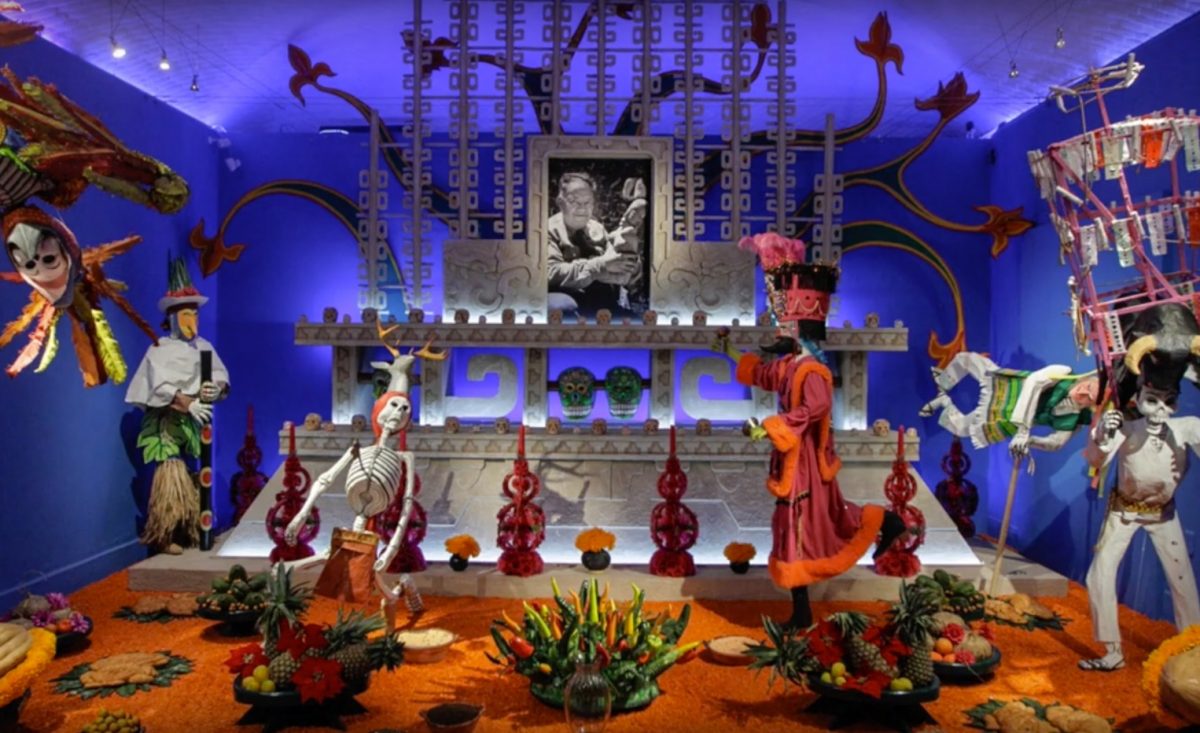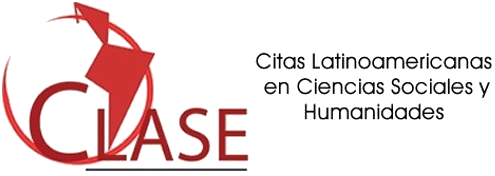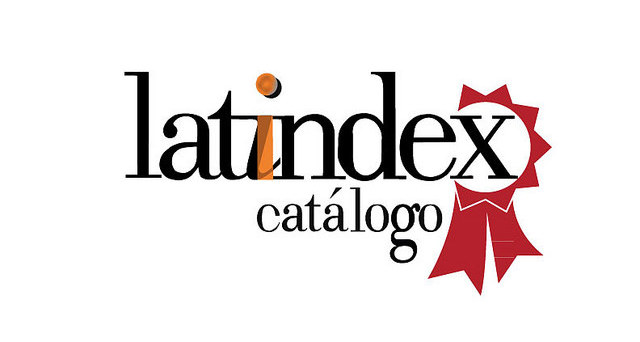Altars of the Dead: Changing Heritage of a Mexican Tradition
DOI:
https://doi.org/10.29340/en.v5n10.279Keywords:
espiritualidad New Age, altar of the dead, patrimony, Mexico, COVID-19, anthropologyAbstract
During the first year of the COVID-19 pandemic, the public Day of the Dead ceremonies, valued as intangible national heritage, were cancelled. What would be the effects of this culture of isolation on the Day of the Dead tradition? Would the tradition cease, move or mutate towards new uses, places and expressions? And what new creative uses of the tradition would emerge? With these questions we undertook an online survey. With the data obtained from 720 questionnaires and 280 photographs received from the altars of the dead we made a video to describe to whom the altars are dedicated, to explain the physical displacements towards the home and the socio-digital networks; the aesthetic changes that document new resemanticizations and resymbolizations, be they familiar, institutional, patriotic, mercantile, spectacularization or linked to expressions of citizen activism; the new places where they are mounted that helped to recognize the plasticity of this tradition as a material support of renewed senses, expressions and socio-cultural demands linked to the theme of death and remembrance that are manifested in the varied appropriations of this ancestral Mexican tradition.
Downloads
References
Arizpe, Lourdes (2009). El patrimonio cultural inmaterial de México. Ritos y festividades. México: conaculta.
Broda, Johanna (1991). “Cosmovisión y observación de la naturaleza: el ejemplo del culto a los cerros en Mesoamérica”, en Johanna Broda, Stanislaw Iwaniszewski y Lucrecia Maupomé (ed.), Arqueoastronomía y etnoastronomía en Mesoamérica. México: Universidad Nacional Autónoma de México, pp. 461-500.
— (2003). “La ritualidad mesoamericana y los procesos de sincretismo y reelaboración simbólica después de la conquista”. Graffylia: Revista de la Facultad de Filosofía y Letras, pp. 14-27.
Bueno Fischer, Rosa Ma. (2006). “El ejercicio de ver: medios y educación”, en Inés Dussel y Daniela Gutiérrez (comp.), Educar la mirada. Políticas y pedagogías de la imagen. Buenos Aires: Manantial, pp. 165-178.
De la Torre, Renée y Cristina Gutiérrez Zúñiga (2016). “El temazcal: un ritual prehispánico transculturalizado por redes alternativas espirituales”. Ciencias Sociales y Religión/Ciências Sociais e Religião, vol. 18, núm. 24, pp. 153-172. https://doi.org/10.22456/1982-2650.63841 DOI: https://doi.org/10.22456/1982-2650.63841
— (2017). Mismos pasos nuevos caminos: transnacionalización de la danza conchera. Guadalajara: El Colegio de Jalisco y ciesas.
— (2020). “covid-19: la pandemia como catalizador de la videogracia”. Espiral. Estudios sobre Estado y Sociedad, vol. 28, núm. 78-79, pp. 167-213. https://doi.org/10.32870/eees.v28i78-79.7205. DOI: https://doi.org/10.32870/eees.v28i78-79.7205
— (2021). “Las ruinas arqueológicas de México: arenas donde se disputa el patrimonio”. Ciencias Sociales y Religión/Ciências Sociais e Religião, vol. 23, pp. 1-35. https://doi.org/10.20396/csr.v23i00.15006 DOI: https://doi.org/10.20396/csr.v23i00.15006
— y Anel V. Salas (2020). “Altares vemos, significados no sabemos: sustento material de la religiosidad vivida”. Encartes, vol. 3. núm. 5, pp. 206-226. https://doi.org/10.29340/en.v3n5.141 DOI: https://doi.org/10.29340/en.v3n5.141
Encreer/rifrem (2016). Encuesta Nacional sobre prácticas y creencias religiosas en México. Recuperado de http://rifrem.mx/encreer, consultado el 9 de agosto de 2022.
Gutiérrez Zúñiga, Cristina (2021). “Modelos de convivencia en transición: la escuela pública y la diversidad religiosa”, en Renée de la Torre y Pablo Semán (ed.), Religiones y espacios públicos en América Latina. Buenos Aires: calas y clacso, pp. 135-161.
Instituto Nacional de Estadística y Geografía (inegi) (2020, 14 de mayo). Estadísticas a propósito del día mundial del Internet (17 de mayo) [comunicado de prensa]. Recuperado de https://www.inegi.org.mx/contenidos/saladeprensa/aproposito/2020/eap_internet20.pdf, consultado el 9 de agosto de 2022.
Lomnitz, Claudio (2006). Idea de la muerte en México. México: Fondo de Cultura Económica.
Malvido, Elsa (2006). “La festividad de Todos Santos, Fieles Difuntos y su altar de muertos en México, patrimonio “intangible” de la humanidad”. Patrimonio cultural y turismo – Cuadernos, núm. 16, pp. 41-56.
Martín Barbero, Jesús y Germán Rey (2001). Os exercícios do ver. Hegemonía audiovisual e ficção televisiva. San Pablo: senac.
Meyer, Birgit (2019). Cómo as Coisas importan. Uma abordagem amterila da religião. Porto Alegre: ufrgs Editora.
Richard, Nelly (2006). “Estudios visuales y política de la mirada”, en Inés Dussel y Daniela Gutiérrez (comp.), Educar la mirada. Políticas y pedagogías de la imagen. Buenos Aires: Manantial, pp. 97-112.
Semán, Pablo (2020). Vivir la fe. Buenos Aires: Siglo xxi.

Published
Issue
Section
License
Copyright (c) 2022 Encartes

This work is licensed under a Creative Commons Attribution-NonCommercial 4.0 International License.
Aviso de derechos de autor
- Los autores/as conservan los derechos de autor y ceden a la revista el derecho a la primera publicación con el trabajo registrado con la licencia de atribución Creative Commons, que permite a terceros utilizar lo publicado siempre que mencionen la autoría del trabajo y a la primera publicación en esta revista
- Los autores/as pueden realizar otros acuerdos contractuales independientes y adicionales para la distribución no exclusiva de la versión del artículo publicado en esta revista (por ej. Incluirlo en un repositorio institucional o publicarlo en un libro) siempre que indiquen claramente que el trabajo se publicó por primera vez en esta revista.
El material puede ser copiado, distribuido, comunicado, ejecutado públicamente. Se pueden hacer obras derivadas de él. No se puede utilizar para fines comerciales. Se debe reconocer y citar la obra de la forma en que tú especifiques.









